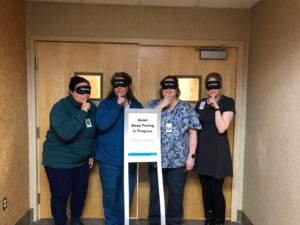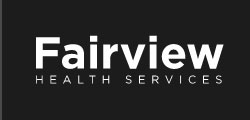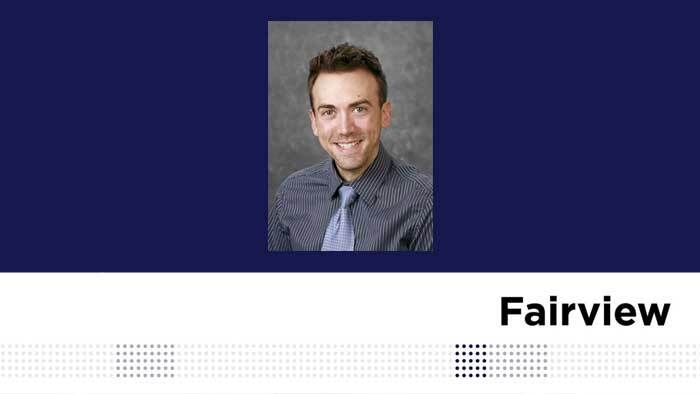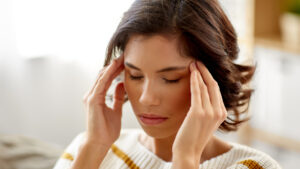We talked with Dr. Tom Gustafson, Adult and Pediatric Sleep Medicine Provider at Fairview Range Medical Center in Hibbing, MN to help answer some top questions about sleep disorders.
The Fairview Range Sleep Center in Hibbing is a full-service sleep center that offers comprehensive overnight and daytime testing, as well as longer duration sleep recording for insomnia.
- Scott Fitzgerald had many quotes about sleep, Dr. Gustafson’s two favorites are:
- “The worst thing in the world is to try to sleep and not to.”
- “Every man’s insomnia is as different from his neighbor’s as are their daytime hopes and aspirations.”

Sleep is central to your health. Your happiness, safety, critical thinking, and physical health all depend on a regular, uninterrupted, and adequate daily sleep.
If you suspect you may have a sleep disorder, connecting with a sleep medicine physician can help determine the issue and how to improve it.
What are the different types of sleep disorders?
- Insomnia: Having difficulty falling asleep and / or staying asleep. About 10% of American adults have insomnia at any given time.
- Sleep Apnea: This disorder causes people to stop breathing during sleep for seconds or minutes at a time. People with sleep apnea may wake up gasping for air or snore loudly. About 10-15% of the adult population have sleep apnea and it is also seen in children. We now have multiple treatment options for sleep apnea including CPAP (a small mask and machine), dentist-made mouth guards, positional changing devices, and some newer surgical options including the Inspire device (a small device that looks like a heart pacemaker that is implanted in the body).
- Rapid Eye Movement (REM) Sleep Disorder: When we dream, our bodies are normally paralyzed. Individuals who have a REM sleep disorder experience muscle jerking and other abnormal body movements during the dreaming state. This can result in kicking, sleep fighting, and sleepwalking. This can be dangerous for the sleeper and their bedmate. We recommend further evaluation of these concerns since it may be an early sign of Parkinson’s disease or other neurological concerns.
- Excessive Daytime Sleepiness: This can have many causes, but can include uncommon disorders such as Narcolepsy or Idiopathic Hypersomnia where there can be an underlying neurologic drive leading to uncontrolled periods of sleepiness.
- Restless Leg Syndrome: An urge / need / strong desire to volitionally move our legs near bed time or while in bed trying to fall asleep and can make it very difficult to fall asleep.
- Sleep Walking / Sleep Terrors: These occur from very deep non-dream sleep and are caused by the ability for our brains to be partially awake and partially asleep at the same time. Typically the person doing these activities has little to no memory of their activities. The behaviors can range from light mumbling to walking and moving around your room or house. Infrequent brief episodes are likely normal, but we recommend talking with your doctor if they are frequent, if you have ever injured yourself or someone else, or have ever gotten outside or near outside.
Can kids have sleep disorders?
Yes, many of the patients that come to the Fairview Range Sleep Center are young kids. Identifying and treating a sleep disorder early can help your child develop lifestyle changes that can vastly improve their sleeping patterns throughout their life. Most kids can be tested at our Hibbing Sleep Center, but more complex cases may require a visit to our partner clinic at the M Health Fairview University of Minnesota Masonic Children’s Hospital. Dr. Gustafson also works at that location, so he can still read the information and follow-up with your child.
What types of sleep tests does Fairview Range offer?
Four of the most common types of sleep testing offered are:
- In-Lab Overnight Sleep Study: This test is conducted at the lab where patients stay overnight. About 20-30 stickers and leads are placed around the body. Data, such as heart rate, brain waves, muscle movements, oxygen saturation and more, is collected as the patient sleeps. Mid-way through the night, the sleep technician may put the patient on oxygen, CPAP or other therapies to help improve breathing, brain waves and or other findings that may be abnormal in relation to normal sleep patterns.
- T3 Home Sleep Test: With this test, you take the portable respiratory sleep monitor kit home, wear it for a night and then return to the sleep center. The team will then analyze the collected data and determine a plan to address any abnormal findings.
- WatchPat Home Sleep Test: This is a single-use, disposable test you do at home that is connected to an application on your smartphone. Data from the probe you wear on your finger is transmitted to the techs in the sleep center and a report is generated for the physician to review. Once you’re done with the test you can discard it. No need to return to the sleep center.
- Actigraph: A watch-like device worn for two weeks that helps to get a very detailed picture of your sleep and wake pattern.
Will insurance cover a sleep test?
Typically, insurance will cover all or a portion of a sleep test, but we recommend you check with your insurance company first before making an appointment.
What are some ways to improve your sleep?
There are many behavioral changes we can make to help our ability to fall asleep and stay asleep. Dr. Gustafson likes to arrange these into three “buckets.” These recommendations are a form of cognitive behavioral retraining to retrain our brain for a positive association with bed and sleep.
Bucket #1 – Sleep Hygiene: This is the sleep environment and our behaviors before and near bed time. We recommend avoiding screen time (phones, iPads, computers) for at least one hour before bed, since the bright light exposure naturally delays our brain’s natural sleep time. We also recommend avoiding caffeine after 2pm and to keep caffeine to three or less beverages per day. We also define that the bed is for sleep and sex only.
Bucket #2 – Stimulus Control: This is what you should do and should not do if you can’t fall asleep or wake up during the night. First thing is NO CLOCK OR TIME VISIBLE FROM BED. Nothing increases the frustration of not sleeping than watching the time march by. So, if you do wake up, it is ok, we all have a few brief awakenings naturally in our sleep. Plan to give yourself what feels like 15 minutes to return to sleep. If still awake, we recommend actually getting out of bed and occupying your time with a non-stimulating hobby. We do not want you to do anything that would reward you the following day such as chores, items for work, taxes, etc. This will only train your brain that it’s a good thing to wake up in the middle of the night. Once you start feeling drowsy, move back to your bed.
Bucket #3 – Sleep Restriction: It may sound counterintuitive but going to bed later can sometimes improve your sleep. It can help you go to bed more tired and get better rest. You should still try to get at least seven hours of sleep. This is based on the biology that we can sleep so many hours in a 24 hour period (average is seven to eight hours for adults). Thus, if you are in bed for nine hours (i.e. you go to bed at 9pm and don’t get out of bed until 6am), it is very likely you will have difficulty falling asleep, difficulty staying asleep, or both. This same rationale links with the recommendations below about taking shorter naps (no longer than 30 minutes).
Is napping bad?
A healthy nap length is 10 to 30 minutes. Longer than this can start to affect our ability to fall asleep or stay asleep at night.
For more information, please reach out to the Fairview Range Sleep Center at 218-362-6558.



